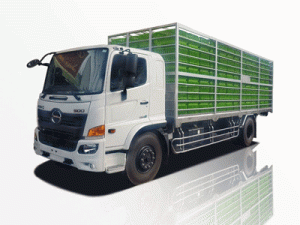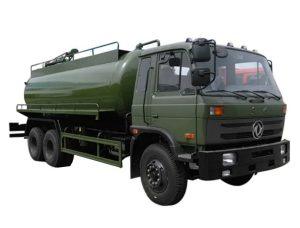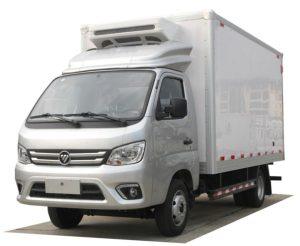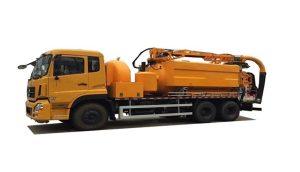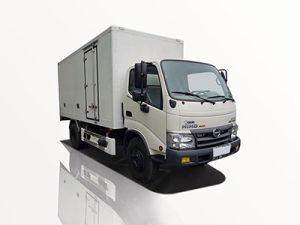Monday to Saturday - 8:00 -17:30
Comprehensive Guide to Toilet Suction Pumps: Everything You Need to Know
Toilet suction pumps are innovative devices designed to improve waste removal in various plumbing situations, making them an increasingly popular option in both residential and commercial settings. Understanding how these pumps work, their benefits, and proper usage is essential for homeowners and the plumbing industry alike. This article aims to provide you with a comprehensive overview of toilet suction pumps, ranging from their features and applications to maintenance tips and FAQs.
What is a Toilet Suction Pump?
A toilet suction pump is a device that helps to remove waste from toilets and other sewage systems by using suction power. Unlike traditional gravity-fed systems, these pumps use a motor to generate a vacuum that pulls waste through the plumbing, making them a suitable solution for areas with inadequate drainage or complex plumbing layouts.
How Toilet Suction Pumps Work
Toilet suction pumps work by creating a high-pressure vacuum that draws in waste materials. When the toilet is flushed, the pump is activated, drawing sewage through an inlet pipe. The motor inside the pump increases pressure, expelling the waste through the discharge pipe and into the sewer or septic system.
Benefits of Using a Toilet Suction Pump
Effective Waste Removal
Toilet suction pumps are efficient, quickly removing waste and preventing clogging, which is particularly beneficial in areas with lower drainage efficiency.
Space-Saving Design
Many suction pumps are compact and can be installed in tight spaces, making them ideal for small bathrooms, RVs, and boats where traditional plumbing might not fit.
Reduced Odors
By efficiently removing waste, toilet suction pumps minimize the risk of odors associated with sewage stagnation, creating a cleaner and more pleasant environment.
Less Plumbing Complexity
Toilet suction pumps simplify plumbing by reducing the need for extensive piping, thus lowering installation costs and potential points of failure.
Types of Toilet Suction Pumps
There are several types of toilet suction pumps available on the market, each designed for specific applications. The most common types include:
Macerrator Pumps
Macerrator pumps are designed to grind waste before pumping it away, making them effective for difficult drainage situations. They are often used in installations without a direct sewage line.
Comminuting Pumps
These pumps function similarly to macerator pumps but can handle both solid waste and liquids, allowing for versatile applications in residential and commercial environments.
High-Volume Pumps
High-volume suction pumps are built for larger facilities and can handle a significant amount of waste, often used in industrial settings or large commercial restrooms.
Installation Process of a Toilet Suction Pump
Installing a toilet suction pump can vary based on the model, but generally follows these steps:
Step 1: Preparation
- Choose an appropriate location where the drain lines will connect to the pump.
- Ensure that there is access to power, as most pumps require electricity to operate.
Step 2: Connect the Toilet
- Separate the toilet from the existing drain system.
- Connect the toilet outlet to the inlet on the toilet suction pump.
Step 3: Connect Discharge Pipe
- Connect the discharge pipe from the suction pump to the chosen drainage system.
- Ensure proper sloping for gravity to assist in waste movement if it’s a horizontal setup.
Step 4: Testing the System
- Turn on the pump and flush the toilet to test its functionality.
- Check for leaks and ensure that waste is expelled efficiently.
Maintenance Tips for Toilet Suction Pumps
Regular Inspections
Perform regular inspections to identify any signs of wear or malfunction. This includes checking for leaks, unusual noises, and loss of suction power.
Clean the System
Periodic cleaning can prevent clogs and extend the life of the pump. Use enzyme-based cleaners that won’t damage the pump components.
Check Electrical Connections
Ensure that the electrical connections are secure and free from corrosion, as improper wiring can lead to pump failure.
Store Properly
If the pump will be unused for an extended period, ensure that it is appropriately stored, preferably in a dry, climate-controlled environment.
Choosing the Right Toilet Suction Pump
Consider Your Needs
Assess your specific needs, such as the volume of waste, type of installation, and space constraints. This can guide you in choosing the right pump for your situation.
Brand Reputation
Research various brands and read reviews to ensure you select a reliable and effective toilet suction pump.
Warranty and Support
Consider models with warranties that cover parts and labor, providing peace of mind in case of future issues.
Practical Examples of Toilet Suction Pump Applications
Small Bathrooms
In homes where bathrooms are built over a garage or a basement, a toilet suction pump can help install a toilet without extensive plumbing modifications.
RVs and Boats
Toilet suction pumps are popular in RVs and boats due to space constraints and the need for efficient waste disposal without a direct sewer connection.
Commercial Spaces
Restaurants, cafes, and other commercial establishments often utilize suction pumps in restrooms where traditional plumbing logistics could lead to complications.
Common Issues with Toilet Suction Pumps
Clogging
Regular maintenance and proper usage can significantly reduce the likelihood of clogs.
Noisy Operation
If your suction pump is making unexpected noises, it may indicate a problem with the motor or wear in the pump components.
Pump Failure
Pump failure can occur due to electrical issues, lack of maintenance, or damage. It’s critical to address these issues promptly to avoid complications.
Frequently Asked Questions (FAQs)
1. How long do toilet suction pumps last?
With proper maintenance, most toilet suction pumps can last between 5 to 10 years.
2. Can I install a toilet suction pump myself?
While some homeowners are capable of DIY installations, it’s recommended to hire a professional plumber for proper installation and compliance with local codes.
3. Are toilet suction pumps energy-efficient?
Yes, modern toilet suction pumps are designed to be energy-efficient, often using less electricity compared to traditional sewage systems.
4. What type of maintenance do toilet suction pumps require?
Regular cleaning, inspections for leaks, and ensuring electrical connections are secure are essential for maintenance.
5. Can toilet suction pumps handle non-sewage waste?
Toilet suction pumps are designed primarily for human waste and toilet paper. Avoid flushing non-biodegradable items to prevent clogging.
6. How do I know if my pump needs replacing?
If your pump shows signs of inefficiency, such as prolonged pumping cycles, leaks, or unusual noises, it may be time for a replacement.



